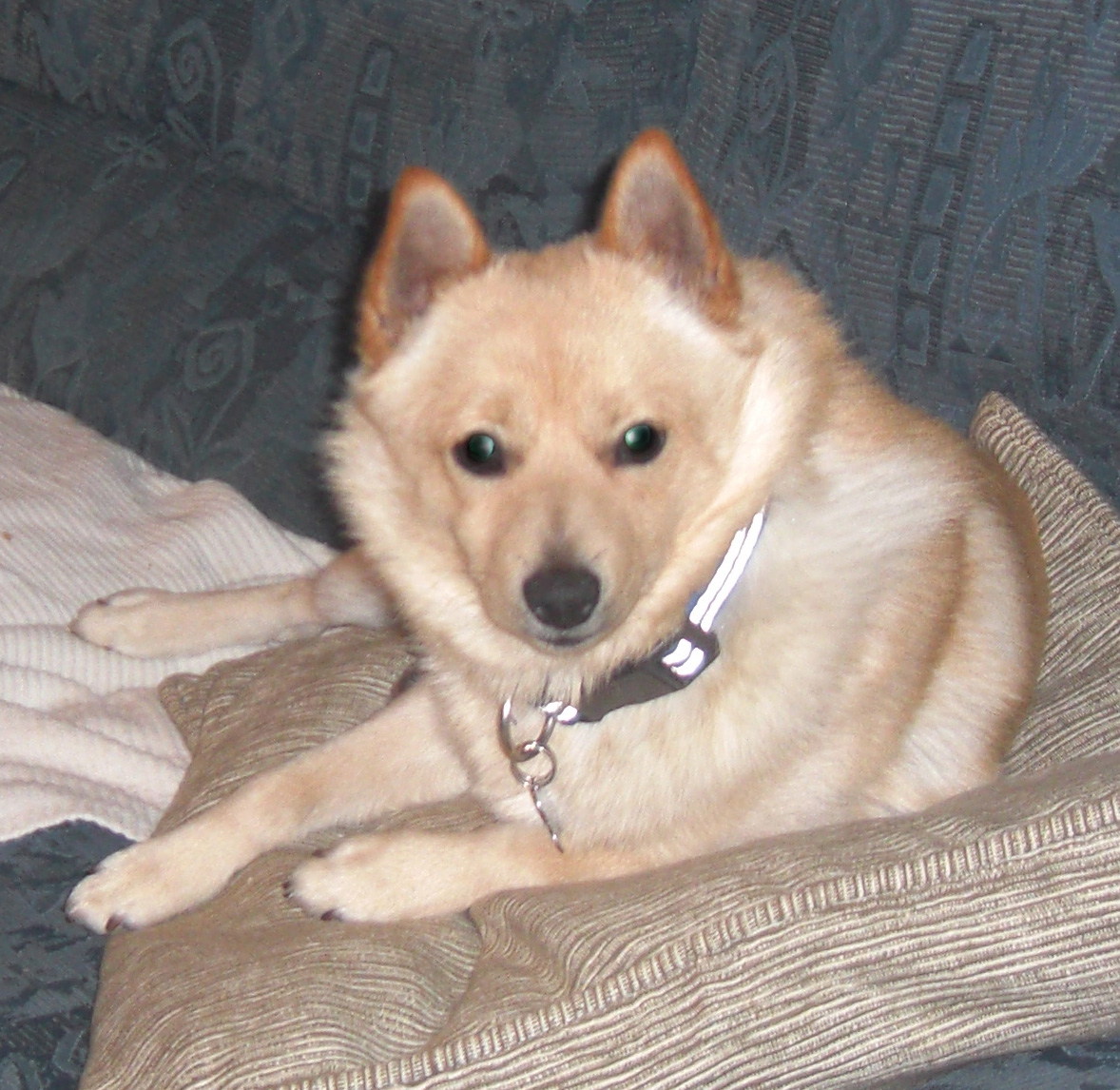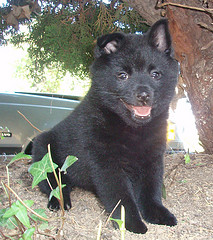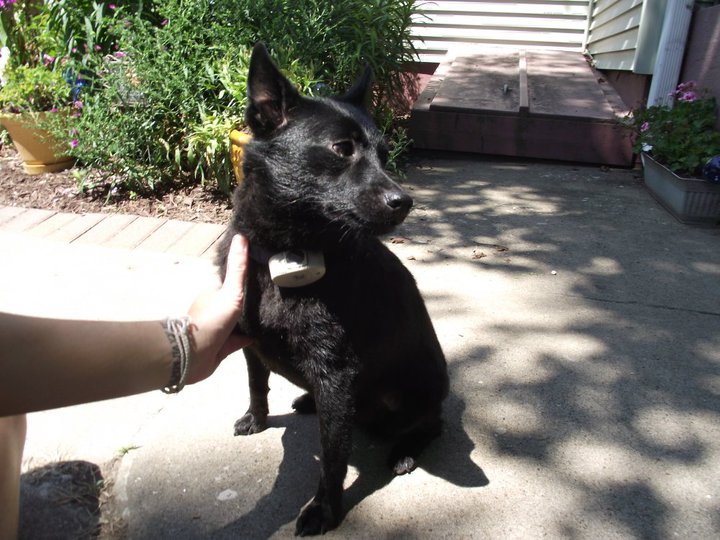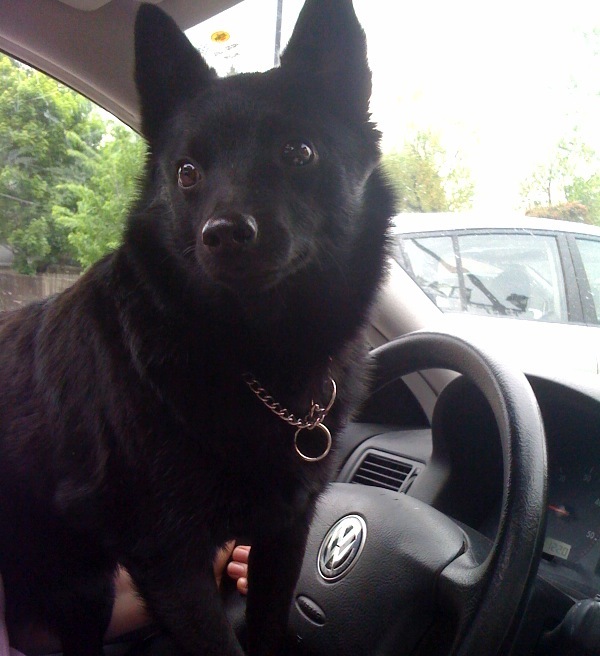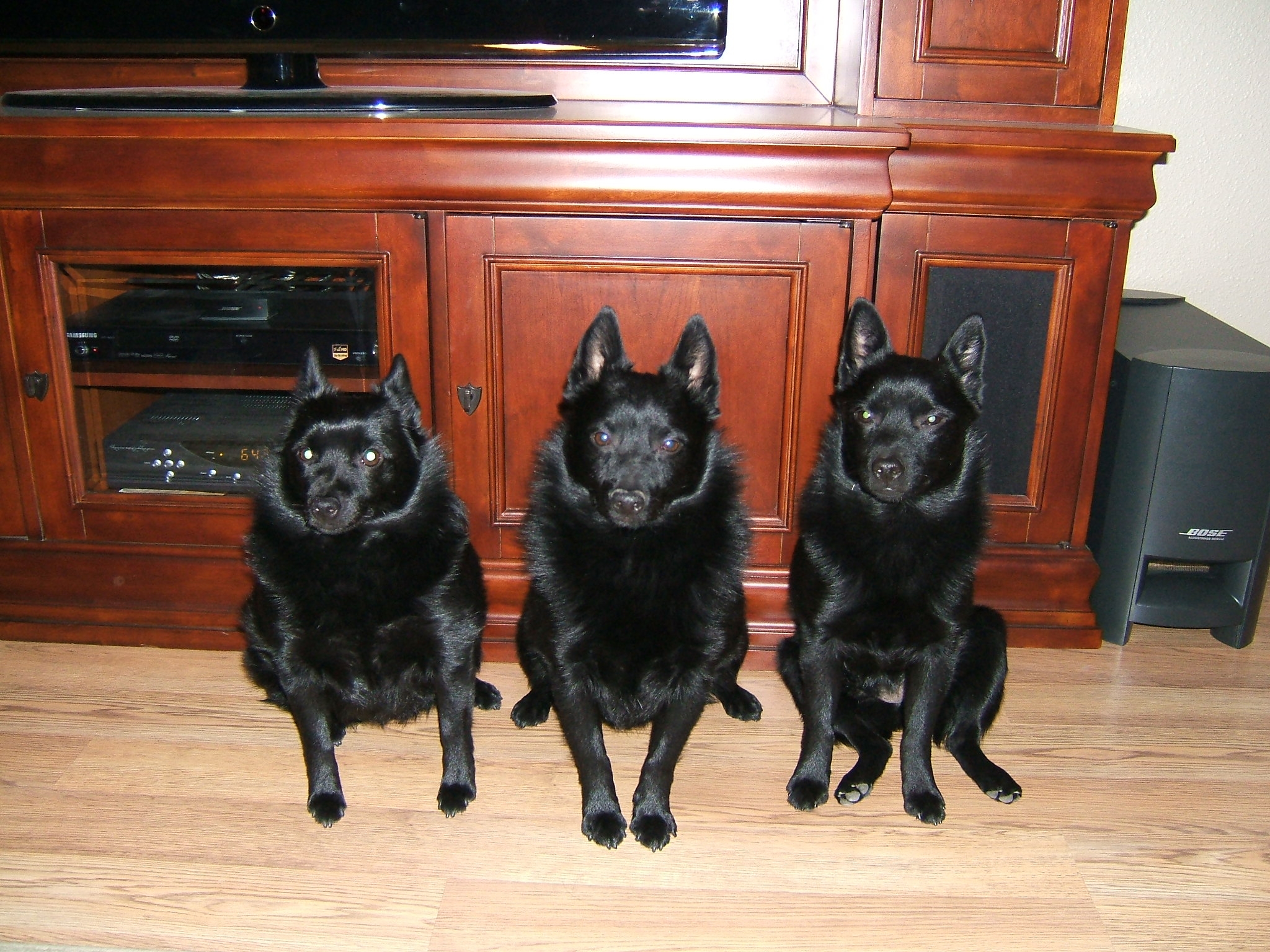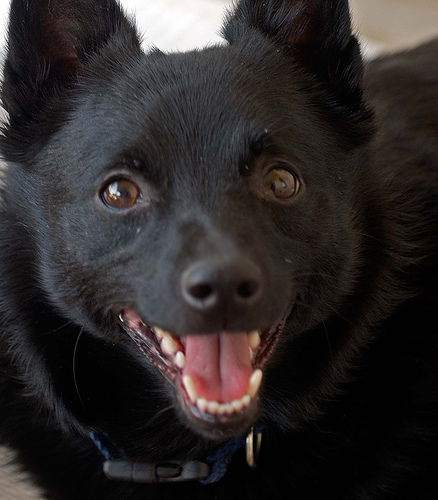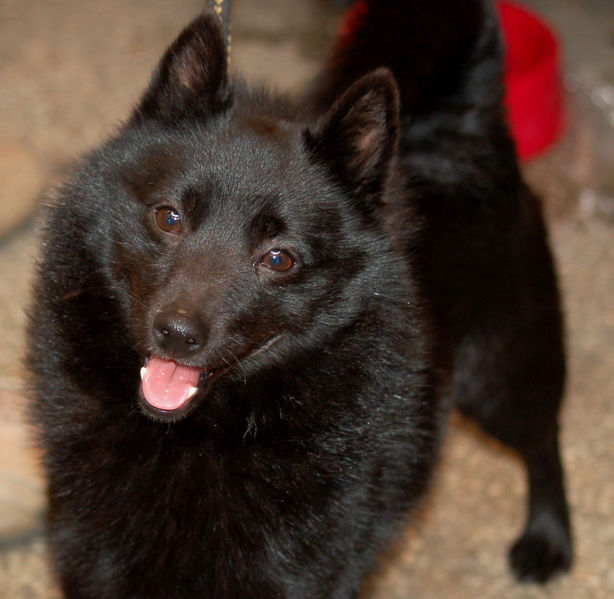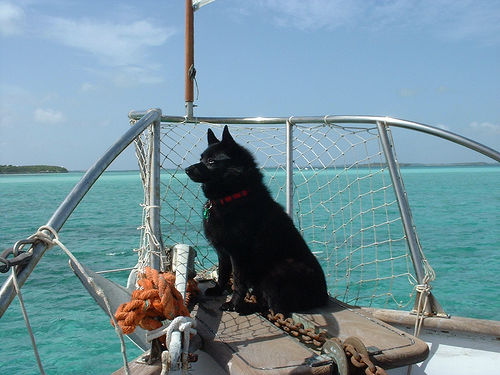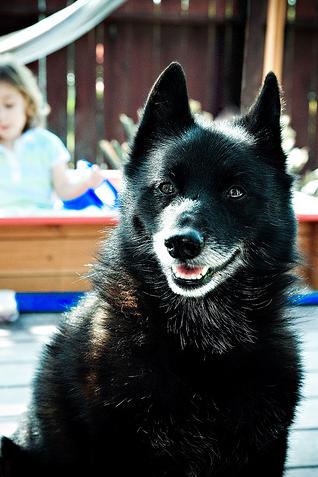
The Schipperke is a small Spitz-like dog with a happy round face covered in a large mane of fluffy fur. Their muzzle is long and narrow ending in a small black nose. The breed’s eyes should be proportional and triangular. They are normally dark brown or black. Sticking straight up from their heads are large triangular-shaped ears which seem almost too big to really be theirs. They have a thick neck and body, but their legs are short and muscular. With this breed, tails are docked very short and some Schipperkes are not born with tails at all. The breed’s coat is very full and fluffy and should be solid black.
User added infoOnly black Schipperkes are recognized in the USA. In Europe, other colors are accepted and permitted, and they include Gold, Cream and Chocolate.
add infoThe Schipperke is a sweet and self-confident little dog. They love being with their family at all times, but they are very reserved with strangers and do not trust them. Other dogs and cats will get along fine with a Schipperke. Children will become a close companion to most Schipperkes, too. Training comes easily for these intelligent and eager to learn dogs. They will often be protective of their property and family, so owners did need to avoid encouraging this behavior early on. One problem area for Schipperkes is their frequent barking and howling.
They tend to be exceptional escape artists. This breed can be stubborn and they love to run free. Leash training helps in developing commands to keep this breed under voice control.
add infoSchipperkes have a proclivity towards some genetic problems, such as CHD (canine hip dysplasia), epilepsy, cataracts, hyperthyroidism, Legg-Calves-Perthes, PRA (progressive retinal atrophy), and MPS 111B (Mucopolysaccharidosis type IIIB). Although this list seems long, the Schipperke is a relatively healthy breed. As long as you find a reputable breeder, most of these concerns can be avoided. The Schipperke has an average life expectancy of about 12 to 15 years.
add infoThe Schipperke originated in Flanders in the 19th century. A canal boat captain named Renssens bred down black Belgian Sheepdogs until they could fit comfortably on the canal boats where they worked to keep rats and vermin from causing problems. This important job is also the source of the breed’s name because Schipperke means “Little Skipper” in Flemish. By the later part of the century, more Schipperkes were moving off the boats and into the homes of families in Belgium. After it made its debut in a dog show in 1880, the breed’s popularity began to spread and now Schipperkes can be found around the globe.
The Schipperke has been around for around 500 years. It was originally bred down from a now-extinct breed called Leuvenaar. In the 14th century the French ruling class restricted owning large dogs to aristocrats. Ordinary people still needed dogs for livestock work and protection, thus the need for smaller versions. The original Schipperke came in a variety of sizes and was smooth-coated. Schipperkes were owned by shopkeepers, tradesmen, farmers, hunters, and as family pets. These dogs were popular with people who lived in the country, as well as in the city. It was/is used as a companion dog, watch dog, an eradicator of vermin, a hunting dog(they are terrific trackers), and a herding dog (goats, sheep, and geese). Some members of this breed have retained the herding instinct, but not all. These dogs are the smallest of Belgian shepherd dogs. In the 19th century, according to recent DNA studies, the breed was mixed with Spitz to increase its coat, which is why, today, you will see both full-coated and smooth-coated versions, but in the US show ring, you see the more full-coated. For many years, people have assumed that the name "Schipperke" was a translation from the Flemish for "Little Skipper" because bargemen did use them as ratters and watch dogs. However, the name is actually derived from the word "scheper" (pronounced "schaper" / cfr. "sheep" in english -d.v.) which is Flemish for shepherd. Thus, schipperke simply means small shepherd dog. They were also lovingly called "spitzke" because of their pointed noses, or "moorke" (cfr. "moorish" : black -d.v.) because of their color.
add infoGrooming a Schipperke doesn't require a lot of work. Their hair will never mat or tangle and they normally keep themselves very clean. When they “blow” their coat it is recommended to run a brush over them once or twice a week. Dry shampooing is good for when they get dirty. The Schipperke is always active and energetic so exercise is important. Running and playing is their favorite way to release energy. However, they never seem to run out of energy.
They grow a thick under coat in cold climates that need brushed thoroughly as the weather warms.
add infoSchipperkes are fun and active family dogs. Schipperkes are wonderful companions for children and being with their family is the dog’s greatest joy. However, they need a family that will give them room to play and activities to do. Strangers should not expect warm greetings from the Schipperke. Having lots of hair in their house cannot be a concern for Schipperke owners because these dogs blow their coat which means their black hair will be everywhere. Another issue is their high energy level. Schipperkes need an equally high energy family to keep them entertained so their pent up energy does not end up becoming destructive or making the breed feel frustrated.
add info| Puppies For Sale | Find a Breeder | Rescue a Dog |
|---|---|---|
| Be the First to take out an Ad! |

Berlin, DE
Die Hobbyzucht im „Butzemannhaus“ ist geprägt von Liebe und Respekt gegenüber den Tieren. Ich sehe meine Tiere nicht... |
Be the First to take out an Ad! |
 |
Do they have fur or do they have hair? Are they good for allergies? They have fur. They shed a LOT, so I don't know if I would recommend to someone with bad pet allergies. Otherwise, this is the best breed on the planet! |
